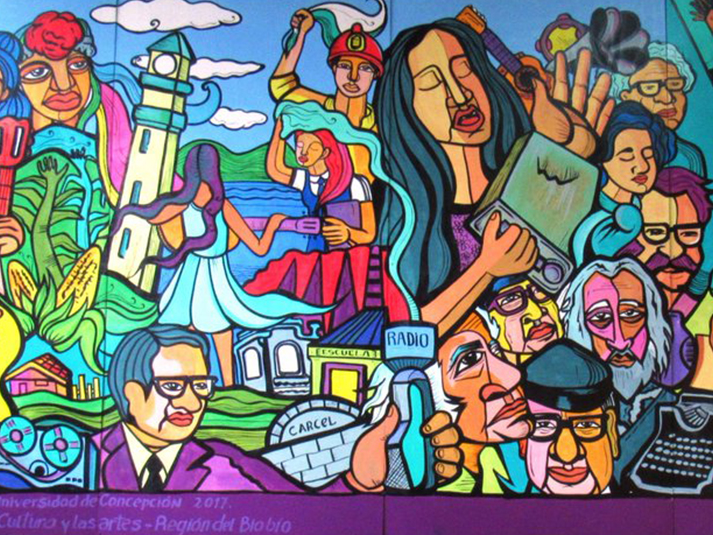
Violeta Parra 1
Dans le Chili des années 60, Salvador Allende n’est pas encore la bête noire des États-Unis. Ceux-ci possèdent toujours les mines de cuivre du pays qui alimentent leurs usines d’armement et continuent d’apporter leur soutien à tout dirigeant conciliant. C’est pourtant à cette époque que naît un mouvement musical, le Nueva Canción Chilena ( La Nouvelle chanson Chilienne) dont Violeta Parra fut le fer de lance.
Dès 1952, Violeta del Carmen Parra Sandoval, qui juste là élevait ses enfants tout en jouant de la guitare dans les bars et restaurants de Santiago parcourt de part en part son pays en enregistrant et notant les chansons folkloriques et traditionnelles qu’elle entend au grès de ses rencontres. C’est alors qu’elle commence à écrire ses propres textes inspirés de connotations sociales. Dès lors, sa renommée ne fera que s’accroitre, traversant les frontières et donnant à la chanson chilienne une visibilité internationale. Tant et si bien que sa chanson la plus connue, Gracias a la vida sera reprise par Joan Baez, María Dolores Pradera, U2, Mercedes Sosa, Elis Regina, Colette Magny et María Farantoúri.
Jusqu’à son suicide le 5 février 1967, à quarante-neuf ans, elle n’aura de cesse de faire revivre un art tombé en désuétude voire snobé par certains milieux afin d’exploiter ses richesses pour en faire une nouvelle chanson chilienne. Surnommée la "mère de la chanson folk Sud-américaine", le 4 octobre, jour de sa naissance, est désormais officiellement déclaré "jour de la chanson chilienne".
Cette session, dans laquelle on peut entendre ses compositions interprétées de multiples façons, est la première d’une série comportant 5 volets qui nous permettront de parcourir la diversité musicale du Chili.
Alors gardez l’écoute, coûte que coûte !
In Chile in the 1960s, Salvador Allende was not yet the bane of the United States. They still own the country’s copper mines which supply their arms factories and continue to provide support to any accommodating leader. It was however at this time that a musical movement was born, the Nueva Canción Chilena (The New Chilean Song), of which Violeta Parra was the spearhead.
As early as 1952, Violeta del Carmen Parra Sandoval, who right there raised her children while playing the guitar in the bars and restaurants of Santiago traveled all over her country by recording and noting the folk and traditional songs which she hears in sandstone of his meetings. It was then that she began to write her own texts inspired by social overtones. From then on, her fame would only increase, crossing the borders and giving the Chilean song an international visibility. So much so that his most famous song, Gracias a la vida will be cover by Joan Baez, María Dolores Pradera, U2, Mercedes Sosa, Elis Regina, Colette Magny and María Farantoúri.
Until her suicide on February 5, 1967, at the age of forty-nine, she never stopped reviving an art that had fallen into disuse, and even snubbed by certain circles, in order to exploit its riches to make it a new Chilean song. Nicknamed the "Mother of South American folk song", October 4, the day of her birth, is now officially declared "Chilean song day".
This session, in which we can hear his compositions interpreted in multiple ways, is the first of a series comprising 5 parts that will allow us to explore the musical diversity of Chile.
So stay tuned, no matter the cost !